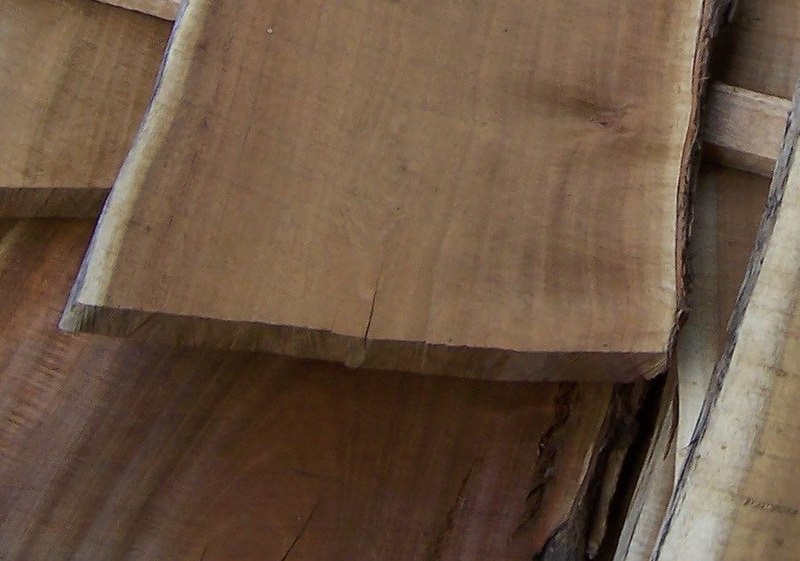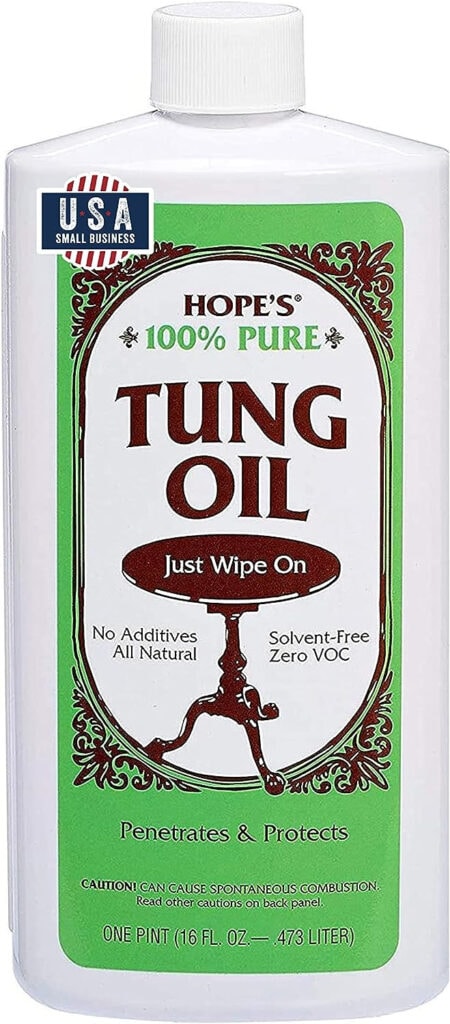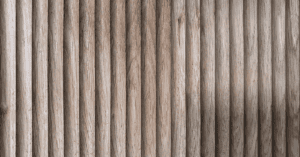
Do you ever wonder if you can use teak oil on acacia wood? That makes the two of us. As someone who owns acacia wood furniture, I want to know which oils to apply for a more durable wooden surface.
Teak oil is among the best wood oils to use on outdoor acacia wood furniture. It can provide weather protection while enhancing the appearance of the wood grain.
Despite its name, teak oil does not come from teak wood. Below, we will teach you the properties of teak oil and why it is good for acacia wood. We will also answer your other questions about this wood-finishing product.
Can You Use Teak Oil on Acacia Wood?

Yes, you can use teak oil on acacia wood, whether it is furniture or flooring.
Acacia is among the most popular hardwoods due to its natural beauty and durability. It can effectively resist moisture, fungi, and scratches. However, acacia wood is sensitive to temperature fluctuations. So when it is exposed to harsh sunlight or freezing weather, it can warp and crack.
Acacia wood also requires constant maintenance to retain its physical characteristics. That is where teak oil comes in.
Teak oil is a wood oil that protects and enhances the appearance of acacia. This product does not contain oil from teak wood, which is another durable hardwood. Instead, teak oil uses a mix of tung oil, linseed oil, and resin. It is called teak oil because it was originally made to protect teak wood.
What Are Other Oils to Use for Acacia Wood?
Teak oil is not the only wood oil you can use to protect acacia. Here are other wood finishes to consider.
Tung Oil

Tung oil is one of the ingredients found in teak oil. So, it is no surprise that tung oil by itself is also safe to use on acacia wood.
Also known as China wood oil, this drying oil contains fatty acids. Tung oil provides protection against moisture, molds, sunlight, and insects.
Tung oil is a great finishing product for acacia wooden furniture.
Linseed Oil

Linseed oil, also called flaxseed or flax oil, comes from the seeds of the flax plant. It is among the components of teak oil. But it also works great on its own. It provides a protective barrier against abrasion, moisture, and stains.
Raw linseed oil is food-safe, making it ideal for acacia wood kitchen products. These include acacia wood cutting board, bowl, spoon, and fork. However, it takes too long to dry. And when exposed to water before it fully dries, it can attract mold.
Other alternatives to pure linseed oil are polymerized linseed oil and boiled linseed oil (BLO). Both products have drying agents that penetrate the wood grain. However, some BLOs use volatile organic compounds (VOCs), which are not food-safe.
What Are the Benefits of Oiling Acacia Wood?

As mentioned, acacia wood is popular for its hardness and durability. But like any other hardwood, it becomes dry and dull when exposed to harsh outdoor elements. That is why you must oil acacia wood.
Applying oil to acacia furniture enhances the natural protective qualities of the wood. It provides resistance to moisture, UV rays, insects, and molding.
Wood oil can also revive the sheen of acacia wood. It is famous for restoring weathered acacia wood outdoor furniture.
Plus, some wood oils like teak oil add a beautiful stain to acacia. They make the hardwood look more luxurious, making it ideal for home furniture.
How to Apply Oil on Acacia Wood?
After learning about the benefits of wood oil, you may wonder how to apply it to your furniture or flooring. The best answer is to follow the instructions on the label. Different wood oils have different application requirements, so always read the directions. But to give you a general idea, we included the most common steps to follow.
- Clean the surface: Before doing anything else, ensure the acacia wood surface is clean. Remove dust by using a damp cloth or a soft-bristled brush.
- Make sure the wood is dry: Allow the acacia wooden surface to dry completely. If you ignore this step, you risk trapping moisture in the wood, which ruins the entire oiling process.
- Apply the oil: Take any wood oil of your choice and dampen a clean cloth in it. Start applying the oil in the direction of the grain. Let the first coat dry before applying another layer of oil.
- Wipe excess oil: Remove extra oil from the wooden surface to speed up the drying process.
- Wait until the acacia wood is dry: The last step involves drying out the acacia wood. The drying period takes anywhere from several hours to a few weeks, depending on the oil’s thickness and drying properties.
Frequently Asked Questions
Can teak oil be used on any wood?
Yes, you can use teak oil on different types of wood. It can protect and enhance the natural beauty of hardwoods. It works particularly well with outdoor furniture.
Does teak oil make wood waterproof?
Teak oil provides a water-resistant barrier to prevent mold, fungus, and warping. However, it does not make the wood waterproof.
How long does teak oil last on wood?
It depends on the type of wood and the specific teak oil ingredients used. In general, outdoor wood furniture needs teak oil replacement more often than indoor wood. Teak oil can last anywhere between six months to a year for acacia wood furniture.
Conclusion
Acacia is a beautiful and durable hardwood perfect for furniture and flooring. However, it can crack and warp when exposed to harsh temperatures.
Fortunately, you can use teak oil on acacia wood outdoor furniture to strengthen it. Teak oil provides resistance to moisture, sunlight, and insects. Plus, it adds a shiny look to the hardwood that makes acacia wood more appealing.
Do you have other questions about teak oil? Visit our website and send your queries via our contact page!






